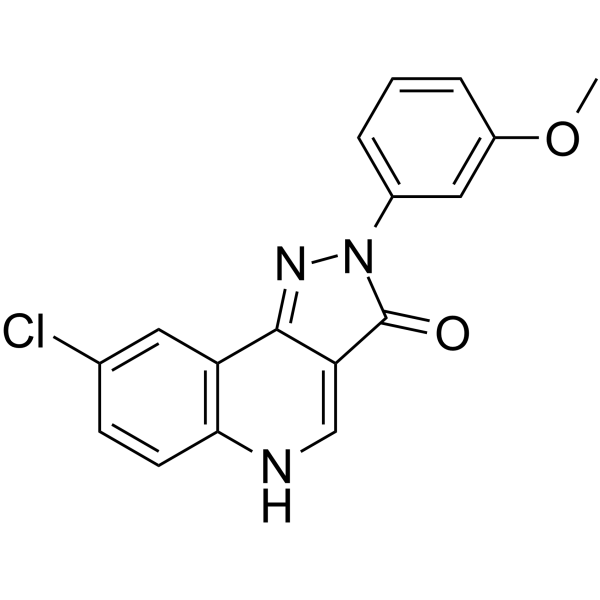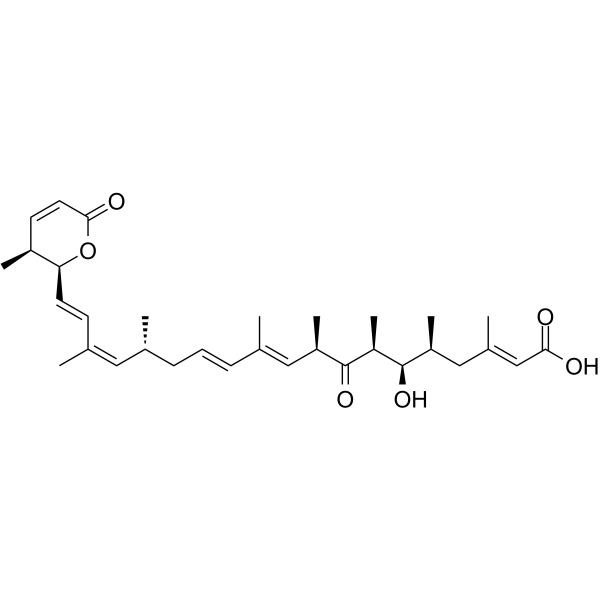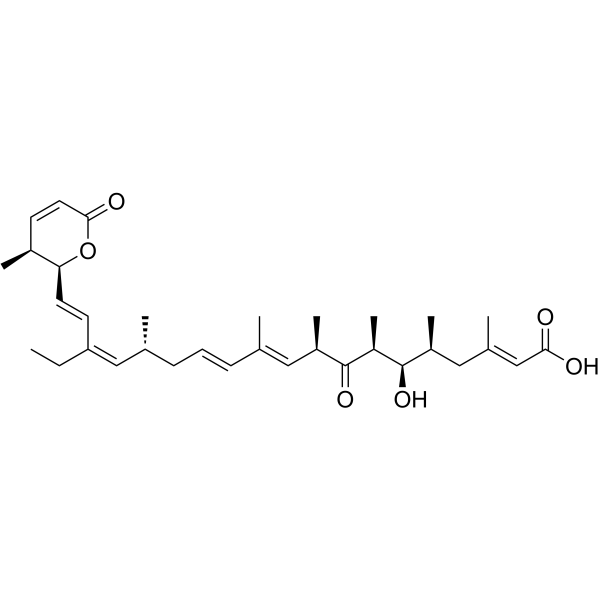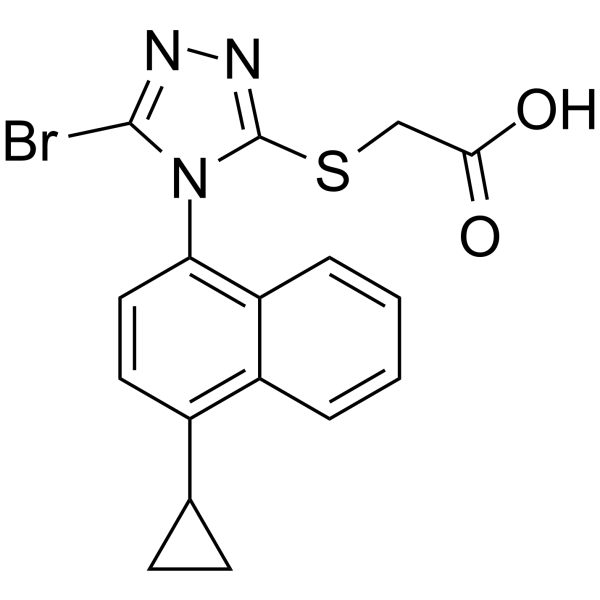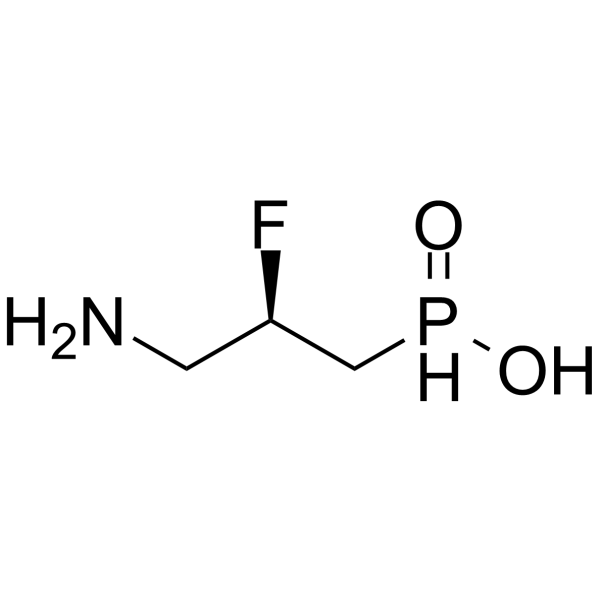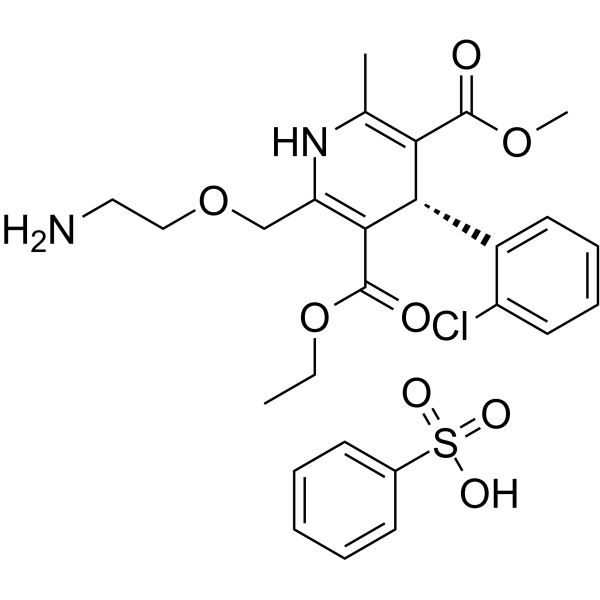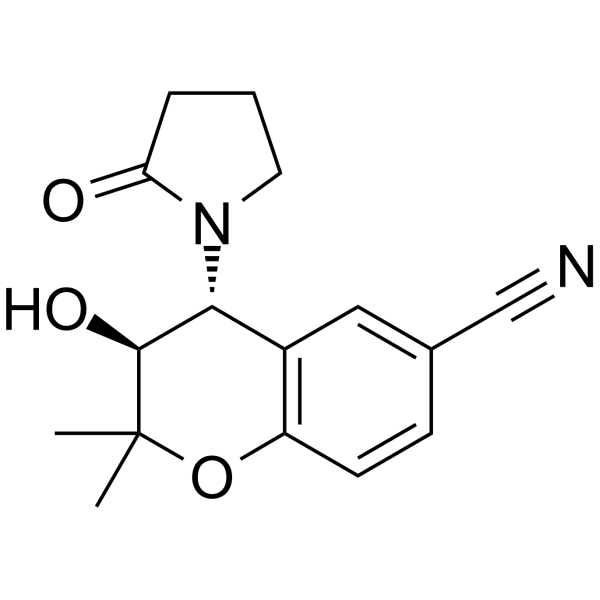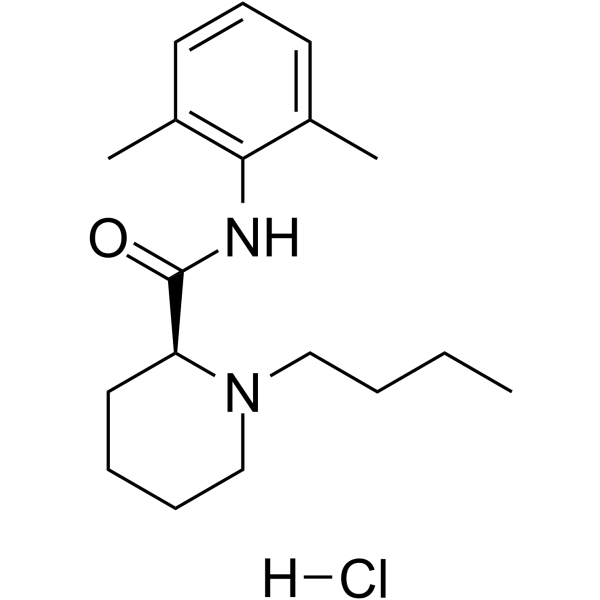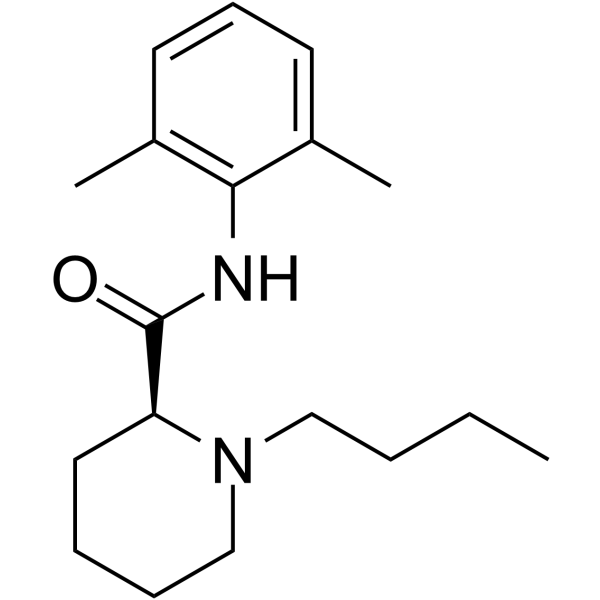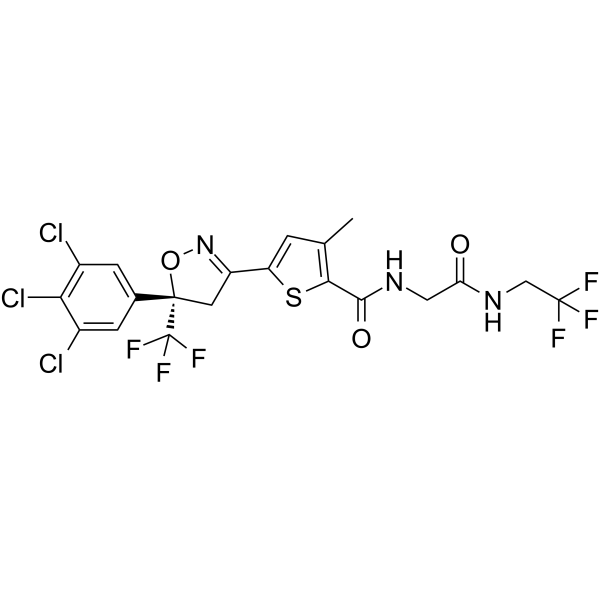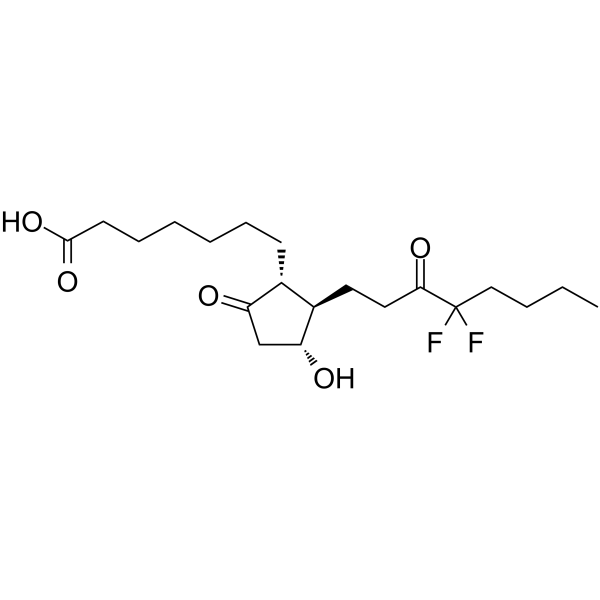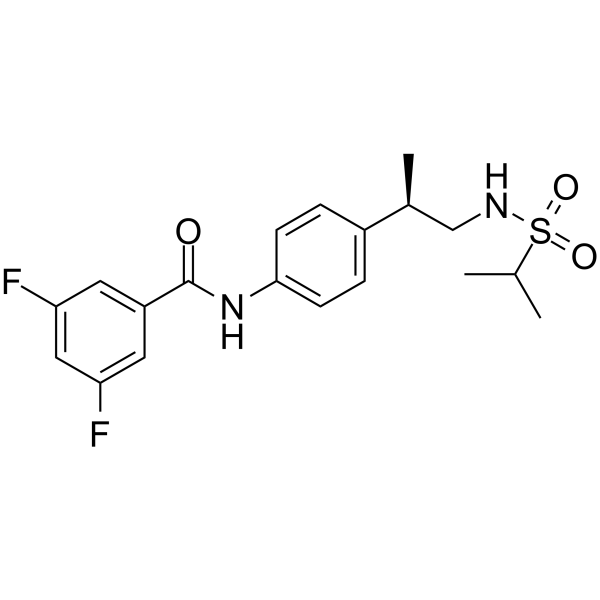|
BP16061
|
KPT330,(E)-
|
|
|
|
|
KPT330,(E)- is a CRM1-selective inhibitor of nuclear export. It inhibits protein trafficking from the nucleus and induces cell cycle arrest and apoptosis in mesothelioma cells.
|
|
BP16062
|
L-689560
|
|
|
|
|
L-689560 is widely used as a radiolabeled ligand in binding studies and used to study the roles of NMDA receptors in normal neurological processes as well as in diseases. At the GluN1 glycine binding site, L-689560 is an effective N-methyl-D-aspartate (NMDA) receptor antagonist.
|
|
BP16063
|
Lansoprazole
|
|
|
|
|
Lansoprazole is a 2, 2, 2-trifluoroethoxypyridyl derivative of timoprazole that is used in the therapy of STOMACH ULCERS and ZOLLINGER-ELLISON SYNDROME. The drug inhibits H(+)-K(+)-EXCHANGING ATPASE which is found in GASTRIC PARIETAL CELLS. Lansoprazole is a potent brain penetrant neutral sphingomyelinase (N-SMase) inhibitor (exosome inhibitor)
|
|
BP16064
|
Lanthanum(III) chloride heptahydrate
|
|
|
|
|
Lanthanum(III) chloride is an inorganic compound which used in biochemical research to block the activity of divalent cation channels, especially calcium channels.
|
|
BP16065
|
Lappaconitine
|
|
|
|
|
Lappaconitine, isolated from Aconitum sinomontanum Nakai, was characterized as an analgesic.
|
|
BP16066
|
LAU159
|
|
|
|
|
LAU159 is a functionally selective positive α1β3 GABA(A) receptor modulator(EC50 : 2.2 μM).
|
|
BP16067
|
Leptomycin A
|
|
|
|
|
Leptomycin A suppresses HIV-1 replication. Less potent than Leptomycin B. Leptomycin A, a Streptomyces metabolite, is an inhibitor of CRM1 (exportin 1) that blocks CRM1 interaction with nuclear export signals, preventing the nuclear export of a broad range of proteins.
|
|
BP16068
|
Leptomycin B
|
|
|
|
|
Leptomycin B is a potent inhibitor of the nuclear export of proteins and is a potent antifungal antibiotic blocking the eukaryotic cell cycle. Leptomycin B inactivates CRM1/exportin 1 by covalent modification at a cysteine residue.
|
|
BP16069
|
Lesinurad
|
|
|
|
|
Lesinurad is a selective inhibitor of uric acid reabsorption which is used in combination with other agents in the therapy of gout. Lesinurad has had a limited clinical use but has not been associated with serum enzyme elevations during therapy or with instances of clinically apparent liver injury.
|
|
BP16070
|
Lesogaberan
|
|
|
|
|
Lesogaberan is an effective and selective GABAB receptor agonist (EC50: 8.6 nM for human recombinant GABAB receptors). For rat brain GABAB and GABAA receptors, the binding affinity (Kis) is 5.1 nM and 1.4 μM, respectively.
|
|
BP16071
|
Levamlodipine besylate
|
|
|
|
|
Levamlodipine, also known as S-amlodipine, is a pharmacologically active enantiomer of amlodipine, an antihypertensive and anti-anginal medication. Levamlodipine belongs to the dihydropyridine group of calcium channel blockers. The names S-amlodipine and levamlodipine may be used interchangeably as both substances are the same, however, with differing nomenclature. As a racemic mixture, amlodipine contains (R) and (S)-amlodipine isomers, but only (S)-amlodipine as the active moiety possesses therapeutic activity.
|
|
BP16072
|
Levcromakalim
|
|
|
|
|
Levcromakalim is an activator of the ATP-sensitive K+ channel.
|
|
BP16073
|
Levobupivacaine hydrochloride
|
|
|
|
|
Levobupivacaine HCl is a reversible neuronal sodium channel inhibitor, which is the pure S(-)-enantiomer of bupivacaine. It was utilized as a long-acting local anesthetic.
|
|
BP16074
|
Levobupivacaine
|
|
|
|
|
Levobupivacaine is an amino-amide local anaesthetic drug belonging to the family of n-alkylsubstituted pipecoloxylidide. It is the S-enantiomer of bupivacaine. Levobupivacaine hydrochloride is commonly marketed by AstraZeneca under the trade name Chirocaine. Compared to bupivacaine, levobupivacaine is associated with less vasodilation and has a longer duration of action. It is approximately 13 per cent less potent (by molarity) than racemic bupivacaine.Levobupivacaine is indicated for local anaesthesia including infiltration, nerve block, ophthalmic, epidural and intrathecal anaesthesia in adults; and infiltration analgesia in children. Adverse drug reactions (ADRs) are rare when it is administered correctly. Most ADRs relate to administration technique (resulting in systemic exposure) or pharmacological effects of anesthesia, however allergic reactions can rarely occur.
|
|
BP16075
|
Linoleoyl Ethanolamide
|
|
|
|
|
Linoleoyl Ethanolamide is an endocannabinoid agent. It acts by binding to TRPV1 increasing ERK phosphorylation and AP-1 dependent transcription in CB-receptor in an independent manner.
|
|
BP16076
|
Lotilaner
|
|
|
|
|
Lotilaner is a parasiticide. It is used as a potent non-competitive antagonist of insects GABACl receptors (IC50 of 23.84 nM for Drosophila melanogaster GABA receptor). It also has no effect on a dog GABAA receptor.
|
|
BP16077
|
Lubiprostone
|
|
|
|
|
Lubiprostone, an activator of ClC-2 chloride channels, is used in the therapy of idiopathic chronic constipation.
|
|
BP16078
|
Lupanine
|
|
|
|
|
Lupanine has a weak sedative effect on the central nervous system, interaction with specific drugs used for treatment of the CNS and for analgesic activity. Lupanine improves glucose homeostasis by influencing KATP-channels of pancreatic beta cells.
|
|
BP16079
|
LY-404187
|
|
|
|
|
LY404187 is a positive allosteric modulator of AMPA receptors
|
|
BP16080
|
LY450108
|
|
|
|
|
LY450108 is a potentiator of the AMPA receptor that can be used in Parkinson's disease studies.
|
-.gif)
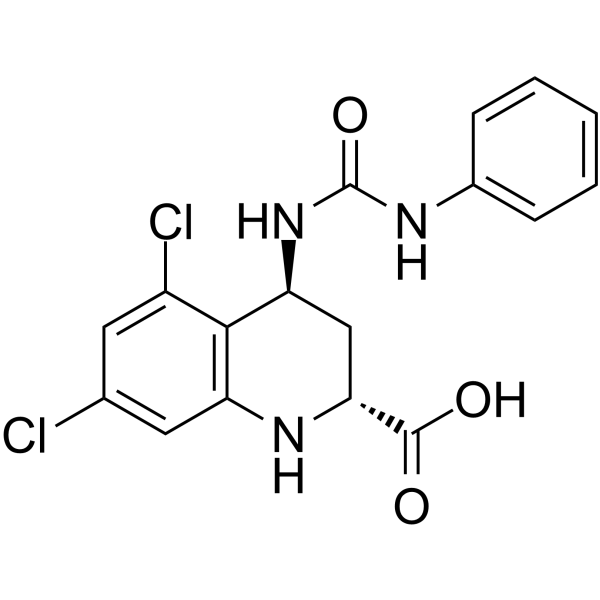
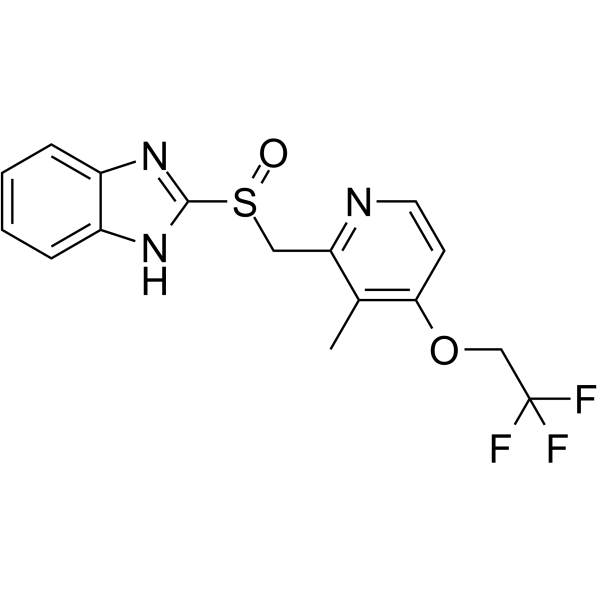
 chloride heptahydrate.gif)

